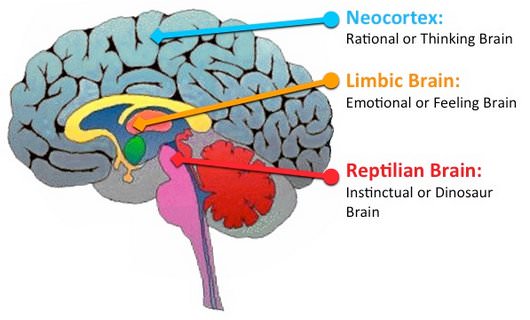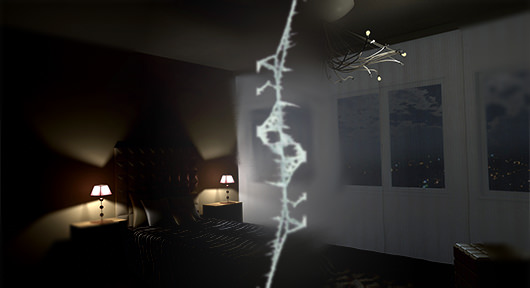How I Dealt with Night Terrors
I was 23 when I began to suffer from night terrors.
A night terror is not merely a bad dream. It's a shocking and fearsome hallucination that arises after waking suddenly from a deep, dreamless sleep.
The first time it happened, Pete and I had just flown for 22 hours to New Zealand and were suffering from sleep deprivation and the subsequent jet lag which interrupted our sleep rhythms. Though he appeared to suffer few ill effects, it opened me up to this bizarre sleep disorder.
I'm not a screamy type of person. Nevertheless, on this night I woke up screaming in absolute terror - seeing a giant six-foot-tall tarantula standing on its back legs in the bedroom. It was in an aggressive attack position, reaching toward me with its front legs beating. I can recall the image very clearly now (and this was 7 years ago). It was like a bolt of lightening had shot through me. And I knew, without doubt, that the beast had malicious intent. I had to escape.
The fight-or-flight response kicked in and I involuntarily stood up on the bed and apparently attempted to jump over Pete and onto the floor. Instead, I trampled the poor fellow.
Pete woke up and to his credit didn't complain about the head-trampling but instead realized something was wrong and tried to calm me down by hugging me. This was a mistake: I merely viewed it as restraint, a hindrance to my escape.
After about 20 seconds of thrashing and screaming, I noticed the spider had disappeared. I was finally fully conscious and back with reality. I was still on the wrong side of Pete and the bed -- but now I was at least coherent.
The episode was scary. I was pumped full of adrenaline and confounded by this bizarre hallucination which had not taken place in a dream, or even a vivid false awakening, but right there in the bedroom.
What the heck just happened?
What Happens During a Night Terror?
Sometimes these events happened nightly, or even twice-nightly, and sometimes they didn't happen for months. Thankfully, I've never had one quite as extreme as that first one.
But they are the perfect destroyer of a peaceful night's sleep. Imagine drifting off to a land of dreams, letting your guard down - then after 45-60 minutes (always this timeframe: during the transition from one phase of deep sleep to the next) suddenly awakening to a terrifying threat in your "safe place" - your bedroom.
The fright factor is compounded by an inability to escape. Frequently, I jumped, stumbled or fell out of bed, narrowly avoiding slamming into furniture and walls. I grew increasingly fearful of sleeping near large open windows or balconies in case I accidentally plunged over in my frenzy.
During a night terror, I found it impossible to think logically. I was in fight-or-flight mode, driven by my primitive lizard brain. It was pointless if Pete tried to rationalize it with statements like "it's just a night terror" or "there's nothing there". All I knew was: "I can see it and it's going to get me."
Everything else was just details.

Despite my experiences starting in adulthood, night terrors are actually more prevalent in children. And the most common hallucinations center around insects in the bed - a remnant of our evolutionary past? For me, it was the evolutionary fear of spiders, typically crawling on the bedsheets or dangling mid-air right above my face.
Fortunately for most children, is it unusual for them to remember the night terrors the next morning. Unfortunately for me this was rarely the case.
The Causes of Night Terrors
Being anxious was a major contributing factor. If I was worried about life - particularly feeling vulnerable or as if things were out of my control - then the night terrors would happen a lot more frequently.
Other causes I noted were: sleeping in a different location, being especially tired and sleep deprived, and being jet lagged. At the time of my first night terror, all of these ingredients were present.
My research has also highlighted other causes like being under physical stress, taking medications, taking stimulants before bed, and drug abuse.
Of course, you can be under all of these influences and never experience night terrors in your life. What I'm suggesting is that, if you are pre-disposed to night terrors, then these are the real trigger factors.
Furthermore, sleep terrors are so easily set off simply by being touched in the night during that critical deep sleep transition phase. On a number of occasions, Pete unwittingly caused night-time chaos by rolling over and brushing against me in bed. Indeed: a recent study found that 4 out of 5 night terrors are triggered by physical contact and proximity of a sleeping partner or a pet on the bed.
I also discovered I could inadvertently program night terrors to occur, much like I program my lucid dreams. I quickly found I could trigger an episode the same night simply by talking about night terrors, or attempting to write about them.
Fortunately, I could eliminate a lot of these causes in my day-to-day life. But the anxiety trigger was a problem for me. This new stress reaction was a way for me to let off steam, it seemed, and I needed to take action if I was going to put it to rest once and for all.
Dealing with Night Terrors
Through an online forum, while discussing the unconscious mind and how it might process our experiences, I met a lady called Janet Greene. She had developed an emotional release technique based on theories from Cognitive Behavioral Therapy (CBT) and her own dramatic life experiences.
We chatted about her method - how many of our adult behaviors are based on ill-formed childhood belief systems - and she suggested she demonstrate the technique on me.

"What part of your life do you want to change or improve?" Janet asked. "What behaviors do you want to get rid of?"
The first thing I thought of were my night terrors. By this time I'd been dealing with them for more than two years. I told Janet briefly what I was experiencing and how I thought it was being caused by my phobia of spiders, something from my childhood.
(A brief digression: at 17 years old, long before my night terrors began, I went to see a professional hypnotherapist to be cured of my arachnophobia. He talked me into a trance and showed me different ways of looking at spiders, such as personifying them or hearing the Looney Tunes music whenever I saw one.
Later that day I managed to touch a small spider in my bathroom and convinced myself I was cured. But it wasn't long before I met another creepy crawly and felt the intense and irrational fear return. I tried to remain calm but felt it was really just a fake front. Hypnosis wasn't going to do it for me on this occasion.)
Janet explained that the hypnosis hadn't really cured my phobia, only suppressed it on a conscious level. So we dug into the technique - which was really like an intense self-guided meditation, a series of memories that let specific feelings erupt from deep down - and released the anxieties. I felt really good afterwards.
The very next day, I found a White-tailed spider in my living room. Normally this sight would create a physiological reaction - increased heart rate, release of adrenaline, acute anxiety - but this time nothing happened. I was as calm as a field of snow.
I tried to feel anxious, and tried to feel disgust, but it just didn't bother me. Instead I did something I'd never done with a spider that big (let alone a bitey one): I got a glass, trapped it and chucked it out the window. I felt nothing.
Night Curiosities
It was several months before I had another night terror. This time, it was quite different.
I woke up with a jolt, involuntarily saying "Oh my God!" and saw, hanging in the air, a ball of knotted black cotton. Not a spider. Just something vaguely resembling a spider but otherwise altogether innocuous. The night terror, if we can still call it that, had had the life sucked out of it.
This trend continued sporadically and instead of waking up screaming and seeing spiders in my eyeline, I'd wake up with a gasp and see a ball of knotted cotton hovering in front of my face. After a few seconds it would disappear.
I talked further with a psychologist friend who had experience in treating PTSD. He explained how I could re-program my emotional reactions - staying calm in the face of increasing exposure to the stressful stimulus. With practice I believe this helped - along with a changing perspective on life - to reduce the night terrors to an even greater exent.
By 2011, even the cotton-spiders stopped showing up. I would only wake up in the night to see what I always interpreted as rips in the fabric of space-time. That was kind of loopy. They intrigued me more than anything else, as I calmly hallucinated small interdimensional tears hovering in my bedroom. By the time I tried to touch them, they had disappeared. For the record, they were silvery-gray... a bit like cobwebs.

Final Thoughts
Perhaps night terrors are the preferred way for my unconscious mind to express certain fears and anxieties. So how should you react if you are experiencing this expression of unconscious stress?
You can choose to view night terrors as a disorder to be endured, or you can view them as a red flag from your unconscious - a plea for help - then address the underlying concern. Prepare for an analogy.
Imagine you run a website. For some unexpected reason, your website keeps throwing up a bug in the display. You can ignore the bug and suffer the stress that your website looks screwy and will never fix itself. That's fine if it doesn't really bother you. But what if it's impacting your entire website experience? That's when you need to look at the source code, find the exact problem, and re-write it.
In performing Janet's release technique I edited some of my original source code. I went back to childhood events in my mind and found poorly programmed beliefs. Not literal beliefs (such as: spiders are dangerous) but conceptual ones (such as: I am alone in the world). By re-writing these beliefs I fixed my own code.
I can't be sure that I fixed the bug completely: I do still have these odd mini-terrors, which now affect me once or twice per year, where the hallucination is a dark amorphous blob. The sudden awakening is brief and distinctly lacking terror, but I still call them night terrors because I have witnessed their ancestors to be such.
What about the original phobia? Today I harbour a mixture of curiosity and disgust for spiders: I'll happily examine a dead specimen at a museum but if there's a big one spotted slinking under the bed at night, I'm motivated to find it and see it off.
Happily, there is no acute or prolonged fear response to spiders any more (please don't take this as a challenge to throw spiders at me). I put this down to a combination of the night terror treatment and my summoning of human-sized spiders in my lucid dreams for friendly therapy sessions.
















